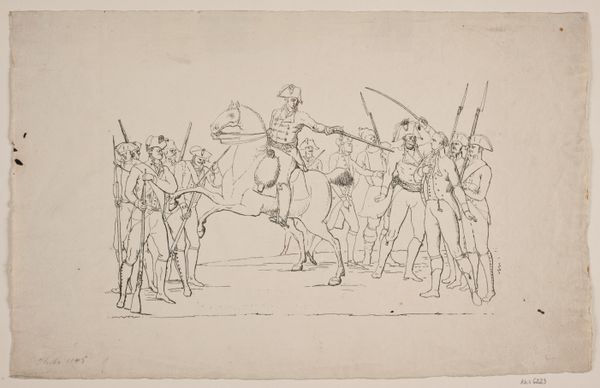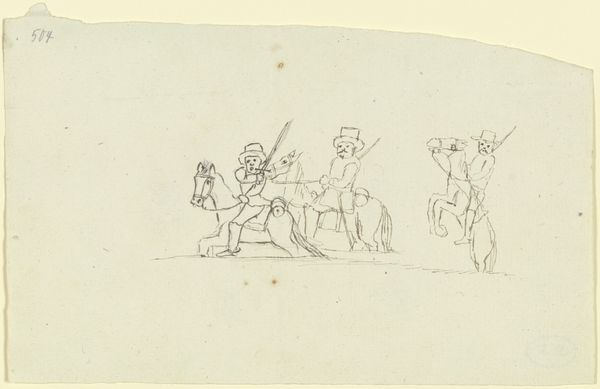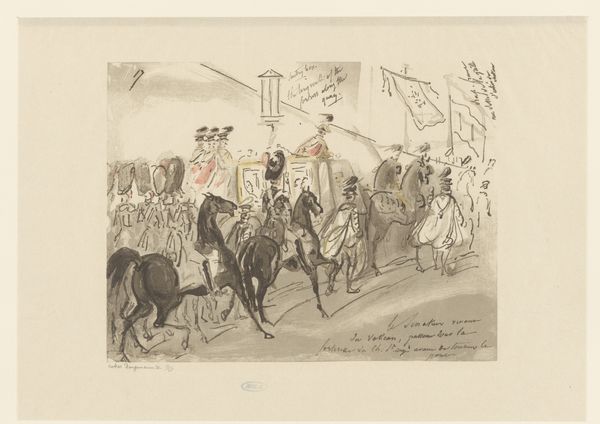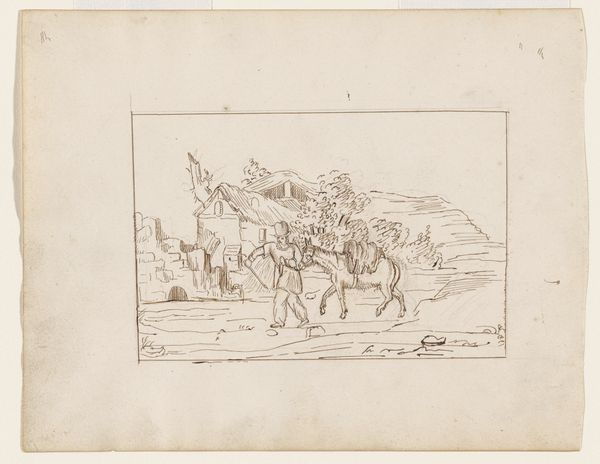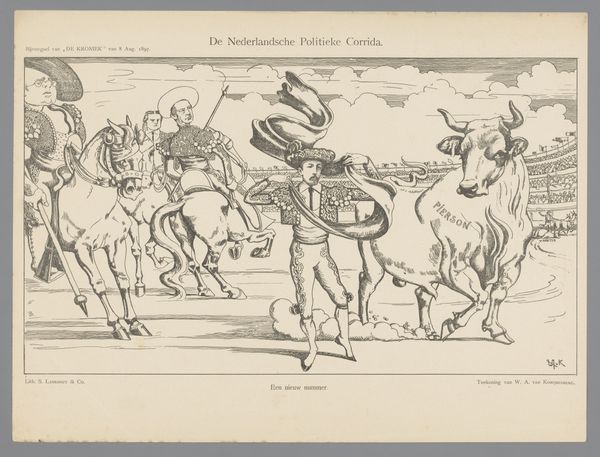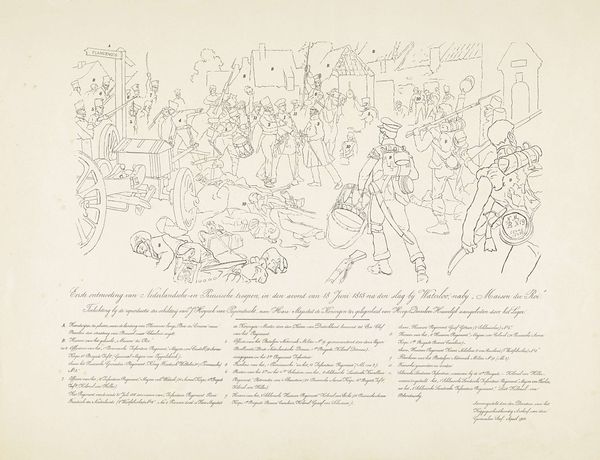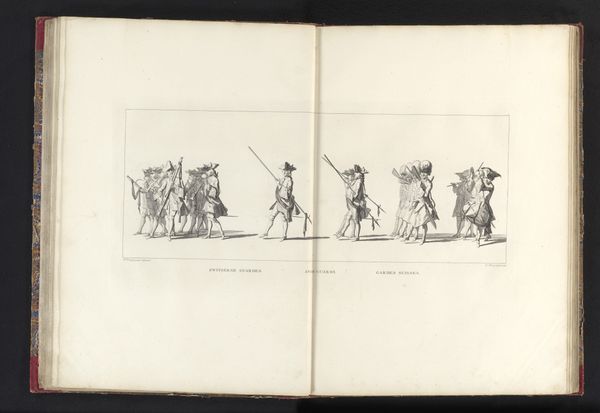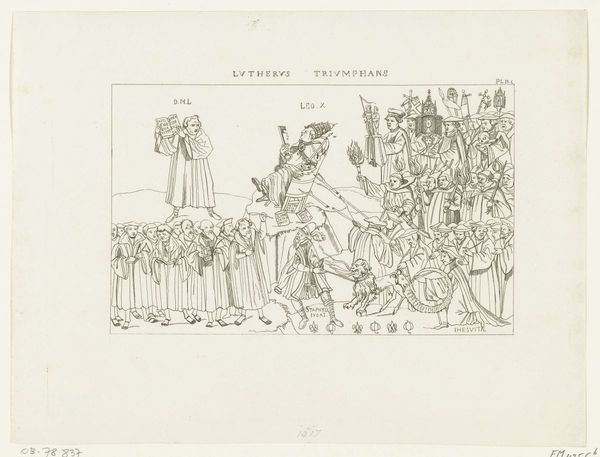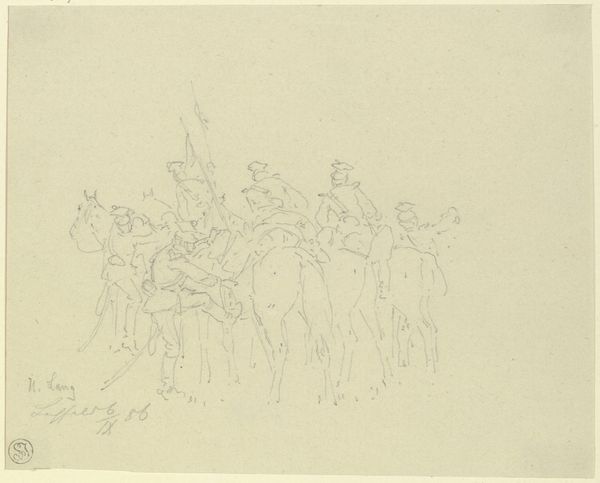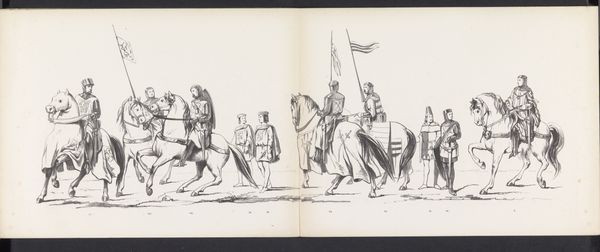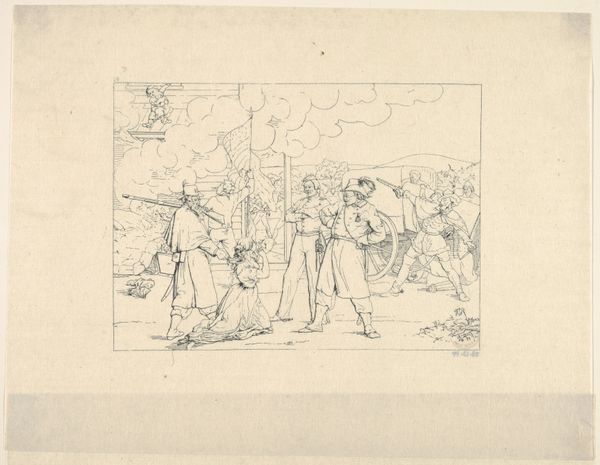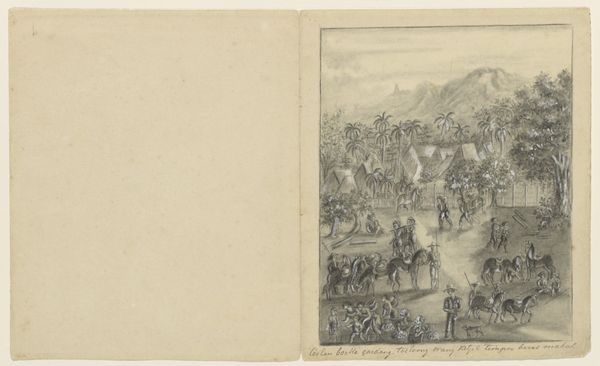
drawing, pen
#
drawing
#
comic strip sketch
#
aged paper
#
caricature
#
sketch book
#
personal sketchbook
#
idea generation sketch
#
sketchwork
#
visual diary
#
line
#
sketchbook drawing
#
pen
#
storyboard and sketchbook work
#
academic-art
#
sketchbook art
Dimensions: height 303 mm, width 409 mm
Copyright: Rijks Museum: Open Domain
Curator: Allow me to introduce "De uitvaart van een Staatsman," or "The Funeral of a Statesman," a drawing possibly created in 1897 by Willem van Konijnenburg. It's executed with pen on what appears to be aged paper. Editor: My initial feeling is of something satirical, almost absurd. The figures are drawn in a very deliberate, almost cartoonish manner. The lack of shading and detail feels rather pointed too. Curator: Indeed. Konijnenburg employs caricature to dissect the political landscape of his time. We can examine it within the context of late 19th-century Dutch politics, the ever-shifting coalitions, and perhaps a commentary on the very nature of power and the rituals surrounding it. What narrative threads do you see unfolding? Editor: Visually, I'm drawn to the repeated use of symbolic coverings – the draped horses, the shrouded figures in the background. The central figure in the carriage seems almost puppet-like. The symbols, the cloaks are less about grandeur, I suspect, than about a staged performance of governance. Notice, also, how little differentiation there is. All lines are equally thin: the horse and carriage is the same visual weight as the tiny protesters on the far left. All of the figures appear flat. It presents them as hollow individuals on a par with political outsiders. Curator: Precisely! We can delve deeper by situating the artwork in relation to the rise of social and political satire at the fin de siècle. I notice banners in the background that point toward issues around 'Kieswet' in 1896 (a form of election law), and a 'grondwet' (constitutional law) in 1897: these may provide a specific ideological basis that the artwork stands for. The drawing prompts an intersectional analysis. Who is truly represented here? Are those excluded also mocked through this satirical lens? Editor: The central figure in the carriage evokes familiar images of authority, maybe even religious authority, in that conical hat. In truth, the figure may only be present to represent the office rather than the individual holding that position. It makes one wonder, in this image, if all political power lies in its appearance. Is this all performance? Curator: By decoding these images, by unveiling the underlying social critique and the deliberate caricature of its participants, we uncover how Konijnenburg harnessed humor as a potent form of political expression, laying bare the performance of statehood. Editor: This drawing, then, is not just a representation of a past event; it is a visual commentary on the ongoing theatre of power itself, prompting a critical assessment of who is included, and more importantly, who remains outside this charade.
Comments
No comments
Be the first to comment and join the conversation on the ultimate creative platform.

